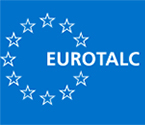Health and safety of talc
Talc is used in the manufacture of a wide range of goods. Known to the general public as a body powder, talc is an important ingredient in a whole variety of products we come into contact with in our daily lives including paper, paints, plastics, rubber, pharmaceuticals—even chewing gum. Exposure levels to talc sustained by consumers using talc body powders or products containing talc are extremely low compared to workers exposed to talc dust during the mining or processing of talc ore. In an industrial context, talc powders may generate dust if inappropriately handled or processed. As with all dusts, the quantity and duration of inhalation determine the level of risk. Human lungs have a natural clearance mechanism for inhaled particles. However this can be overwhelmed by excessive exposure and particles then accumulate in the lung, a phenomenon known as pneumoconiosis. Tobacco smoking significantly reduces the lungs’ clearance capacity. Extensive research has shown that talc has an “inert” dust effect, not a toxic effect. Occupational exposure limits are legally established throughout the European Union, North America, Australia and in many other countries. Worker exposure should comply with these limits in order to avoid any adverse effects. The preferred method for controlling occupational dust exposure is to minimise dust generation and release rather than rely on the wearing of dust masks.
The members of EUROTALC make safety information available to their customers. They are also keen to let them benefit from their wide experience in dust control and occupational health management.
Here are statements on regulatory updates concerning talc:
November 2025: EUROTALC Position on the proposed harmonised classification of talc in Europe: call for considerations of all the facts and the circumstances of the case.
October 2025: please find here EUROTALC’s scientific considerations on the proposed EU harmonized classification of talc.
July 2025: please find here EUROTALC's statement on regulatory updates within the EU
July 2025: please find here EUROTALC's communication on IARC Monographs 136
May 2025: please find here a statement of the Essential Minerals Association concerning regulatory development in the US:
https://www.essentialminerals.org/newsroom/statement-fdas-expert-panel-talc/
March 2025: please find here EUROTALC's statement on regulatory updates within the EU
July 2024: please find here EUROTALC's communication on IARC Monograph 136
February 2024: Food grade talc products are not affected by the ban of titanium dioxide/TiO2 for use as a food additive (E 171), nor are the naturally occurring traces of titanium dioxide that may be present in talc. Please find here a Communication from EUROTALC Members on this topic.


